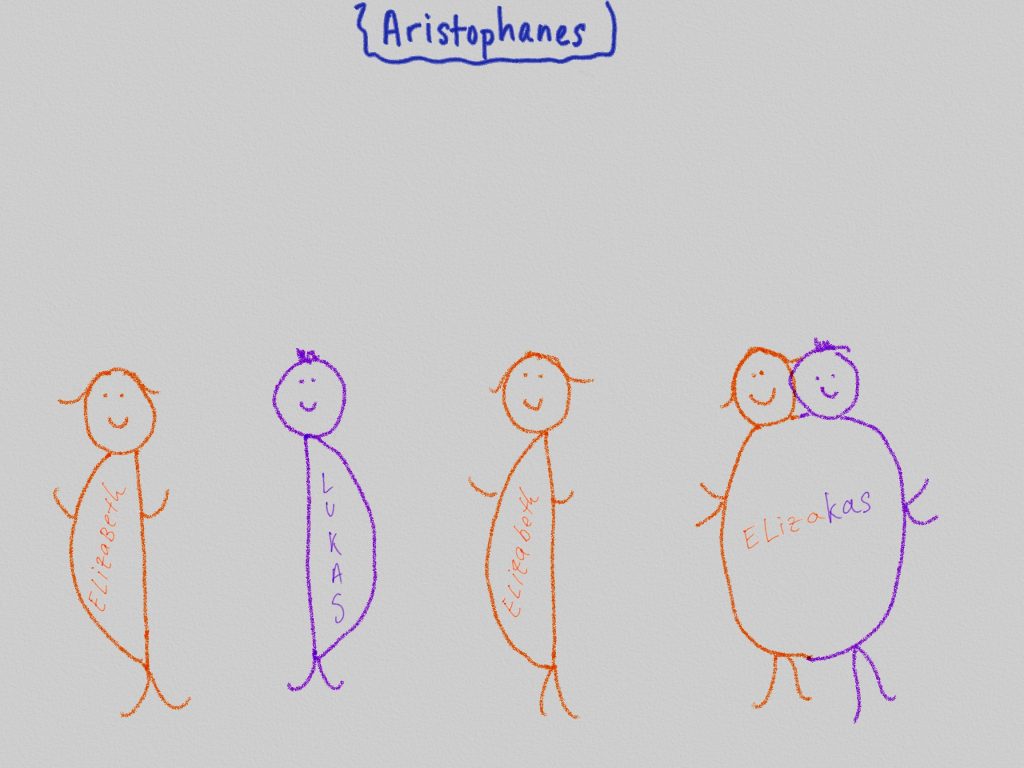Leonard Bernstein describes this movement as a “bedtime story invoking the fairy tale mythology of love.” It is in three big sections, plus a short ending section (in musical terms called a coda).
The beginning of Aristophanes actually sounds like the end of Phaedrus:Pausanius, and, simultaneously, introduces a new melody. We’re going to call it “Elizabeth” because the melody is borrowed from another piece Bernstein wrote dedicated to a friend named Elizabeth Rudolf. (see Anniversaries)
The second part is also borrowed from himself; it comes from a piece dedicated to a friend and fellow composer named Lukas Foss, so we’re going to call the second part Lukas.
On the recording above, Elizabeth is from the beginning to about 1:15 and Lukas is from 1:15-2:55.
Here’s a short excerpt of the Elizabeth part with piano.
(Please forgive the horrible sound quality of these homemade videos, made with an iphone in a NYC apartment!)
Here’s a short excerpt with piano of Lukas.
The third part is Elizabeth repeated.
Then Bernstein does something cool for the end: he puts the Elizabeth and Lukas music together. The violin is playing Elizabeth, and the orchestra (or for our short excerpt to the right, the piano) is playing Lukas. On the recording at the top of the page, this occurs from 3:38 to the end. Perhaps this is Bernstein’s nod to the myth of the two halves of people in the Symposium coming together to make a whole?
The overall form of this movement is:

